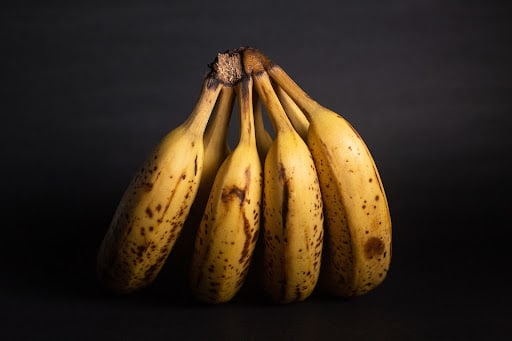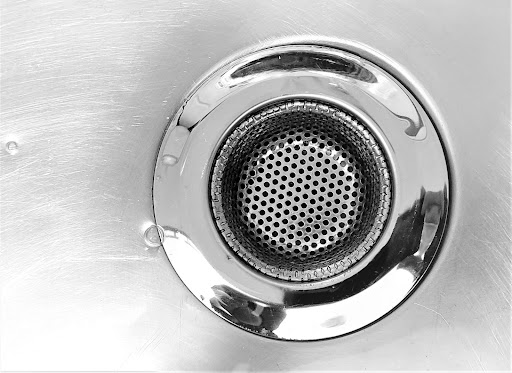How to Build Your Own Gnat Trap
We’ve all had the occasional gnat in our homes. But if you don’t take care of them instantly, or you don’t see them right away, you begin to notice something strange happening. You kill one gnat, and two or three others show up in its place, right?
Soon, what began as a harmless one or two insect annoyance becomes an infestation of gnats. They become like the mythical Hydra, where, when one head is cut off, multiple new ones appear. As soon as you get rid of one gnat, dozens of buddies arrive.
It’s one thing when this happens outside, but now, they’re in your home, and they don’t seem to be leaving anytime soon. You’ve tried all the surefire methods, like sealing your fruit and bleaching your trash can, yet, your gnat infestation remains.
How can you get rid of a problem like this?
You could try a method that recently went viral and invest in a chameleon to eat your fruit flies and other pests or hire an expensive exterminator. But these are both costly and unnecessary steps.
A simple gnat trap, built from many materials you likely have lying around your home, could be your solution, and this guide will show you how to make one.
Solution: You can take steps to prevent gnats or make your own gnat traps from common household items.
1. First: Get Rid of What’s Attracting the Gnats
Before you start building a gnat trap, you should understand what’s bringing them to your home in the first place.
Gnats have a strong sense of smell, thanks to the specialized odor receptor organs they’re born with. These are located on their antennae, and they use them and the visual signs to point the way toward their next meals. They’re even smart enough to differentiate between smells and head to their preferred meals.
This “fruitful” fact is the basis for many homemade and commercial gnat traps. They distinguish between each type of pest’s favorite foods and set up a trap designed to catch them.
You can do the same thing with your home remedies — once you know which kind of gnat you have and what its preferred meals include.
Types of Gnats
Gnats fall into the category of small flies. Their survival instincts propel them toward moisture, but they also want to go where they’re safe from the myriad dangers of predators and climate conditions.
Different small flies are found in varying habitats, where the environments are more suitable for their development. Here’s a quick breakdown of the most common gnat-type flies you’ll probably see in your home.
Drain Flies
As the name implies, these fuzzy, long-winged gnats make their breeding grounds in the drainage system. They’ll happily live anywhere sewage exists, including your septic tank, sewers, and the surrounding contaminated soil.
Fruit Flies
These little brown, round pests love to feast on anything organic. Of course, their favorite meals include rotting fruits and veggies, but they’ll head to any kind of leftover garbage. Discard your empty cans, wine bottles, and other damp material quickly to avoid fruit flies.
Fungus Gnats
Similar to fruit flies (and often mistaken for them), fungus gnats are found anywhere you see decaying organic material. Their preferred habitat is moist soil fertilized with organic matter, like in overwatered potted houseplants. These pests are “skinny” and black with long legs.
Phorid Flies
The least known of the small fly category, phorid flies live on the same diet as drain flies. Therefore, they enjoy anything contaminated by sewage, such as your garbage, soil, drains, and rotting fruits and vegetables.
Most are black or dark brown, but they can occasionally be yellow. You can distinguish them from fruit flies by the phorid’s “humpbacked” appearance.
The best way to avoid an infestation of these pests is to keep your garbage tightly sealed and your drains clean. If you have a can inside your home, empty it frequently. Large bins should be kept outside the home.
But if you’ve accidentally slacked or done all of this and still ended up with gnats, it’s time to build your gnat trap!
2. Types of Gnat Traps and How to Build Them
You’re going fishing for gnats, and you need to use the right bait to catch them.
Before you get to this point, make sure you’ve identified your infestation. Otherwise, you could be wasting your time and effort on building the wrong trap for your pests, who will either ignore or adore (and thrive at) your attempts.
Next, it’s time to pick a trap and start building!
Apple Cider Vinegar Traps
Quite possibly, the easiest trap to “build” is the apple cider vinegar bowl. All you need is a bowl or a glass (mason jars work great), plastic wrap, and at least a half-cup of apple cider vinegar.
Alternatively, you can use liquid dish soap or a tablespoon of sugar. However, these don’t have the strong odor of apple cider vinegar to attract the gnats.
The trick here is to fill the container with a few inches of liquid, leaving enough space that the bug can’t climb out. You also need to cover the bottom of the glass or bowl completely.
Once you’ve poured the apple cider vinegar in, stretch the plastic wrap over the top and seal it tightly. You can always use a rubber band to keep it in place. Then, use a fork or toothpick to poke small holes in the taut surface of the cling wrap, ensuring they’re big enough for the gnat to climb through them. Leave the trap on your kitchen counter.
The gnats will use their odor receptors to locate the apple cider vinegar and use the holes in the wrap to crawl inside. When they fall in, they won’t be able to climb up the sides or fly out, and soon, no more gnats!
Candle Traps
If you have a tapered candle lying around somewhere (in case you need to light your room old-school), it can double as a gnat trap.
With a lit candle, a candlestick, and a pot of warm water, you can draw the gnats to your lure like a moth (ahem, gnat) to a flame. Place the candle in a candlestick or any kind of secure holder. Light it, turn off the lights, and let the flame attract the gnats. They’ll either go into the flame or fall into the water. Either way, you’ve done the trick.
Remember to practice fire safety, and don’t leave a room with a lit candle going.
Wine Traps
Did you know that when red wine expires, it turns to vinegar? That’s the kind of liquid you need for this type of trap, and house flies love it.
If you have out-of-date wine in your cupboard, don’t toss it! Instead, let it sit there in case of a gnat infestation.
This trap works similarly to the apple cider vinegar method. Pour a little of the wine into another container (or, if it’s almost empty, you can use the wine bottle). Add a few drops of liquid dish soap and mix the wine and soap together.
Leave the container in any area of your home where you spot a lot of gnats, and let the spoiled wine attract them. They’ll climb in but won’t be able to get out.
Fruit Traps
We’ve talked about the importance of keeping rotten fruit out of your home. Yet, you’ll need a piece of that decaying organic matter if you want to use it as a homemade fruit fly trap.
Take the overripe fruit and place it in a deep bowl. Cover the bowl with cling wrap, and poke holes in the surface large enough for the bugs to crawl inside. Fruit flies and gnats will rush to get in for their next meal — which will also be their last since they won’t be able to get out of the trap.
3. Simple Household Tips to Help Eliminate the Gnats at the Source
Trapping an infestation of gnats is never fun, but they tend to multiply faster than you can get rid of them. Eliminating them at the source stops the bugs from coming in and lets you focus on those already in your home.
Bleaching the Drains
Since the average household gnat comes in through the drain, start by bleaching each drain system in your home, including the garbage disposals and bathrooms. Remember that bleach is a corrosive chemical that can harm metal pipes.
Typically, it won’t damage your septic system or the environment. But use caution if you’ve recently cleaned the sink drain or fixtures with ammonia-based products. The combination of bleach and ammonia can cause chloramine gas to form, the fumes of which can be dangerous to your health.
Follow these professionally-recommended steps to bleach your drain:
- Protect your skin from coming into contact with bleach.
- Open windows and doors and turn on exhaust fans.
- Mix ½ cup of bleach into one gallon of water.
- Pour the bleach carefully down the drain. Do this slowly to avoid splashing and discoloring other nearby items.
Rinse the surface for at least 30 seconds, and you’re done. You can also use the same combination of ½ cup bleach to one gallon of water to scrub your garbage cans free of any organic matter that might be attracting the pests.
Use Alternative Ways to Kill Gnats
If the gnat traps aren’t working, and you’ve bleached all your drains and trash cans, it might be time to bring in some commercial help.
Chemicals designed to kill fruit flies, such as a drain treatment, are specially formulated to attract and eliminate pesky gnats.
If the flying insects are attracted to your potted plants, consider a gnat stick repellent, safe and effective for use on houseplants, and easily found on Amazon. Peel the sticky paper from the sheet, attach it to the stick, and place it in the infested plant. Within a few days, the fly problem should be solved.
And, of course, there’s the handy dandy bug zapper. These indoor devices produce light and heat in dark places, attracting gnats and other bugs. When the pest touches the metal plate, it’s instantly killed.
Cleaning the trap out involves removing the plate, dumping the trap, and replacing it.
4. When All Else Fails …
Sometimes, you do all the hacks, and the gnats just won’t go away.
You’re almost at the point where letting a few chameleons loose in your home sounds like a good idea.
While you’re welcome to do this if it sounds like something you’d enjoy, it’s not the only option you have to get rid of gnats.
When your gnat problem isn’t going away, the source could be outside. Small flies thrive in moist environments, so if there has been a lot of rain, you’ll need to head to your yard, armed with your new gnat-fighting knowledge.
Look for spots around your home where water is trapped, and debris has accumulated. Piles of leaves, wet potting soil, over-watered plants, decaying wood, and trash heaps are common gnat-attracting culprits. They’re full of live bugs and larvae.
Give your yard a thorough clean-up and see if that helps get rid of the inside and outside infestation.
But if that still doesn’t work, it’s time to call in a professional pest control and gnat trapping expert. Even if it’s a chameleon.
Conclusion
Who would have thought that such a tiny creature could cause so much angst? Most gnats don’t bite, and fruit flies don’t even have mouth parts! Yet, an infestation of bugs in your home, including the non-biting kind, is irritating at best.
A homemade gnat trap could eliminate your small fly issues and headaches at the same time. Use these natural, chemical, and professional methods to get to the root of your problem and get rid of those pesky gnats for good.


